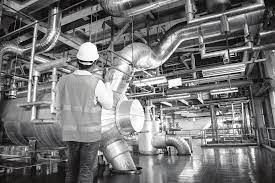KEY FACTORS AFFECTING PLANT AND MACHINERY VALUATION
Introduction: Plant and machinery play a vital role in various industries, serving as essential assets that facilitate production processes. Accurate valuation of these assets is crucial for businesses, as it directly impacts financial decision-making, such as loan applications, acquisitions, and insurance coverage. Several key factors influence the valuation of plant and machinery, ranging from physical condition to market demand. This article delves into the significant factors affecting the valuation of plant and machinery, shedding light on their importance in determining the accurate worth of these assets.
- Age and Useful Life: The age and remaining useful life of plant and machinery significantly impact their valuation. As assets age, their value tends to depreciate due to wear and tear, technological advancements, and changing industry standards. Assessing the remaining useful life of the equipment helps determine its residual value and potential lifespan, affecting the final valuation figure.
- Condition and Maintenance: The physical condition of plant and machinery is a vital consideration for valuation. Well-maintained assets in good working order tend to hold higher value than those in poor condition. Maintenance records and regular servicing play a crucial role in assessing the asset’s reliability, functionality, and potential future costs, which impact its valuation.
- Market Demand and Supply: The principle of supply and demand influences the valuation of plant and machinery. If there is high demand and limited supply for a particular type of equipment, its value tends to increase. Conversely, when there is an oversupply or low demand, the value may decrease. External factors such as market trends, industry growth, and technological advancements can affect demand and supply dynamics, thus influencing valuation.
- Economic Factors: Macroeconomic factors like inflation rates, interest rates, and currency fluctuations can significantly affect the valuation of plant and machinery. Inflation erodes the value of assets over time, while interest rates impact borrowing costs and financing options. Currency fluctuations can also influence the value of imported machinery, as exchange rates impact purchasing power and import/export costs.
- Technological Obsolescence: Rapid advancements in technology can render certain plant and machinery obsolete, reducing their value. Equipment that becomes outdated or inefficient due to technological progress may experience significant depreciation. Valuators must consider technological obsolescence and assess the equipment’s compatibility with current industry standards and future market demands.
- Depreciation and Residual Value: Depreciation is a critical factor in plant and machinery valuation. Various methods, such as straight-line depreciation or reducing balance method, are used to calculate the rate of depreciation over time. Understanding the depreciation patterns and estimating the residual value of the asset at the end of its useful life are crucial for accurate valuation.
- Market Comparisons: Comparing the asset in question to similar equipment available in the market provides valuable insights into its value. Valuators often analyze recent sales data, auction prices, and industry reports to gauge the market value of comparable machinery. These comparisons help establish a fair market value and benchmark the valuation process.
Conclusion: Accurate valuation of plant and machinery is essential for businesses to make informed financial decisions. Factors such as age, condition, market demand, economic influences, technological obsolescence, depreciation, and market comparisons all play a crucial role in determining the value of these assets. Valuators must consider these key factors in a comprehensive manner to arrive at a fair and realistic valuation figure. By accounting for these factors, businesses can better manage their assets, mitigate risks, and optimize their financial strategies.


